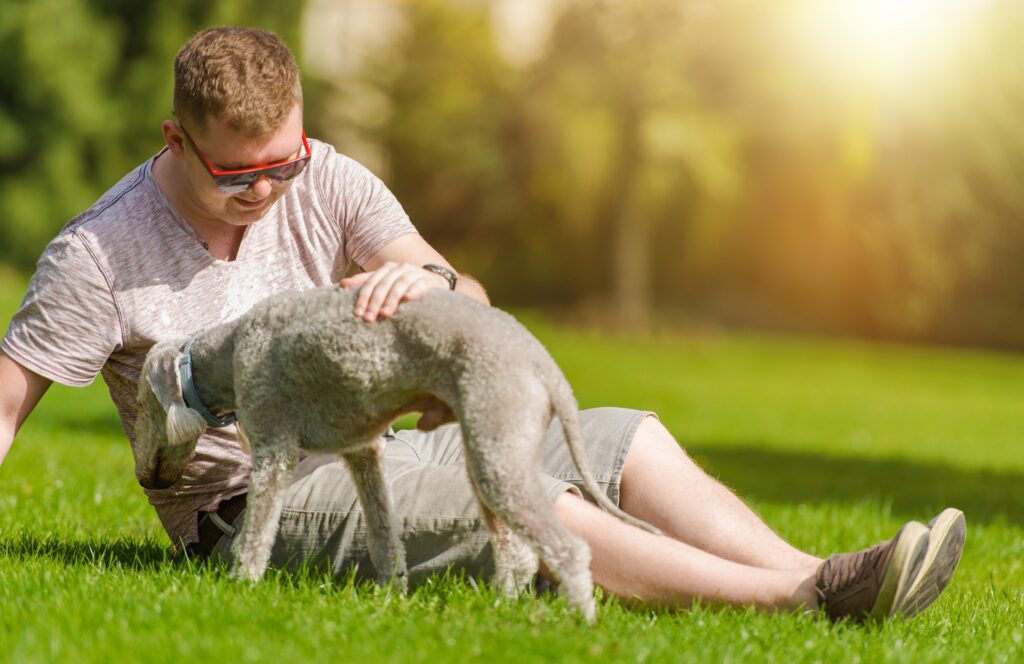Are Bedlington Terriers Easy to Train: A Comprehensive Guide to Their Training Abilities
No, Bedlington Terriers are not easy to train. Bedlington Terriers can be moderately difficult to train due to their independent and stubborn nature. They are intelligent dogs but may sometimes be interested in repetitive or mundane training exercises.


Additionally, Bedlington Terriers may exhibit dominant behavior, making them more challenging to train if not properly addressed. They could also have a strong prey drive, making it difficult to train around smaller pets.
However, Bedlington Terriers can be trained effectively with consistent and positive training methods. Making yourself the pack leader and supplying firm, fair, and consistent training is essential. Positive reinforcement approaches, such as rewards and praise for good behavior, can also be effective in shaping your dog’s behavior.
Table of Contents
Training Bedlington Terriers


Bedlington Terriers are intelligent dogs that can be trained with patience, consistency, and positive reinforcement. Basic obedience training and socialization are essential for all dogs, and Bedlington Terriers are no exception. However, like many terrier breeds, they can be independent and strong-willed, making training more challenging.
Basic Training
Bedlington Terriers respond well to positive reinforcement methods like clickers and reward-based training. Basic commands such as sit, stay, come, and down should be taught to establish a foundation for more advanced training. Consistency is key; short training sessions throughout the day can help keep the dog engaged and focused.
Leash training is also important for Bedlington Terriers since they have a strong prey drive and may be prone to hunting small animals. Teaching them to walk gently on a leash and to come when called can help prevent accidents and keep them safe.
Advanced Training
Bedlington Terriers are athletic dogs enjoying various activities, including agility, obedience, and hunting. Advanced training can help keep them mentally and physically stimulated and strengthen the dog’s and owner’s bond.
Agility training can help Bedlington Terriers develop coordination and confidence while supplying an outlet for their energy. Obedience training can help refine their skills and improve their behavior in various situations. Hunting training can tap into their instincts and provide an entertaining and challenging activity for the dog and the owner.
It is vital to remember that each dog is unique and may have different strengths and weaknesses when it comes to training. For example, some Bedlington Terriers may excel in certain activities while struggling with others. Patience, consistency, and a positive attitude can go a long way in helping Bedlington Terriers reach their full potential.
Challenges in Training Bedlington Terriers


Dominant Behavior
According to the American Kennel Club, Bedlington Terriers can exhibit dominant behavior. This may be due to their strong-willed and independent nature and their breeding history as hunting dogs. If a Bedlington Terrier exhibits dominant behavior, addressing it immediately is important. This can be done through consistent training, socialization, and establishing yourself as the pack leader.
It’s important to note that dominant behavior in dogs should never be met with physical punishment or aggression, as this can escalate the situation and cause more harm than good. Instead, seek the help of a professional dog trainer or behaviorist who can provide guidance and support in addressing your Bedlington Terrier’s dominant behavior.
Stubbornness
Bedlington Terriers are known for their stubborn streak, which can challenge training. They may resist commands or become easily distracted during training sessions. Therefore, it’s important to encourage excellent conduct and use positive reinforcement strategies like treats and praise. And keep them motivated.
Based on experience, consistency is also key when training Bedlington Terriers. They need clear and concise commands, and their training should be reinforced regularly. If they sense any consistency in their training, they may become more clear and responsive to commands.
Boredom
Bedlington Terriers are intelligent and active dogs that require mental stimulation and physical exercise to prevent boredom. They may become destructive and develop behavioral problems without adequate mental stimulation and physical exercise.
When training Bedlington Terriers, it’s important to keep their sessions engaging and interesting. Incorporating games and activities into their training can help keep them mentally stimulated and motivated. Additionally, providing them plenty of exercise and play opportunities can help prevent boredom and reduce behavioral issues.
Tips for Successful Training
Bedlington Terriers are intelligent and eager to please but can also be stubborn. Here are some suggestions to help make training your Bedlington Terrier a success:
- Start training early: Start training your Bedlington Terrier as soon as possible, ideally when they are still a puppy. This will help them develop good habits early on and make training easier in the long run.
- Use positive reinforcement: Bedlington Terriers respond best to positive reinforcement, such as treats, praise, and affection. Avoid punishment or negative reinforcement, as this can make your dog anxious or fearful.
- Be consistent: Consistency is key when training your Bedlington Terrier. Always use the same commands and incentives, and guarantee all family members are on the same page regarding training.
- Keep training sessions short: Bedlington Terriers have brief attention spans, so keep training sessions short and focused. Aim for 10-15 minutes per session, and try to train your dog simultaneously daily.
- Make training fun: Bedlington Terriers are playful and energetic, so try to make training sessions fun and engaging. Use toys, games, and other activities to motivate your dog.
- Be patient: Training takes time and patience, so don’t expect your Bedlington Terrier to learn everything overnight. Be patient, consistent, and positive; your dog will eventually learn what you want them to do.
